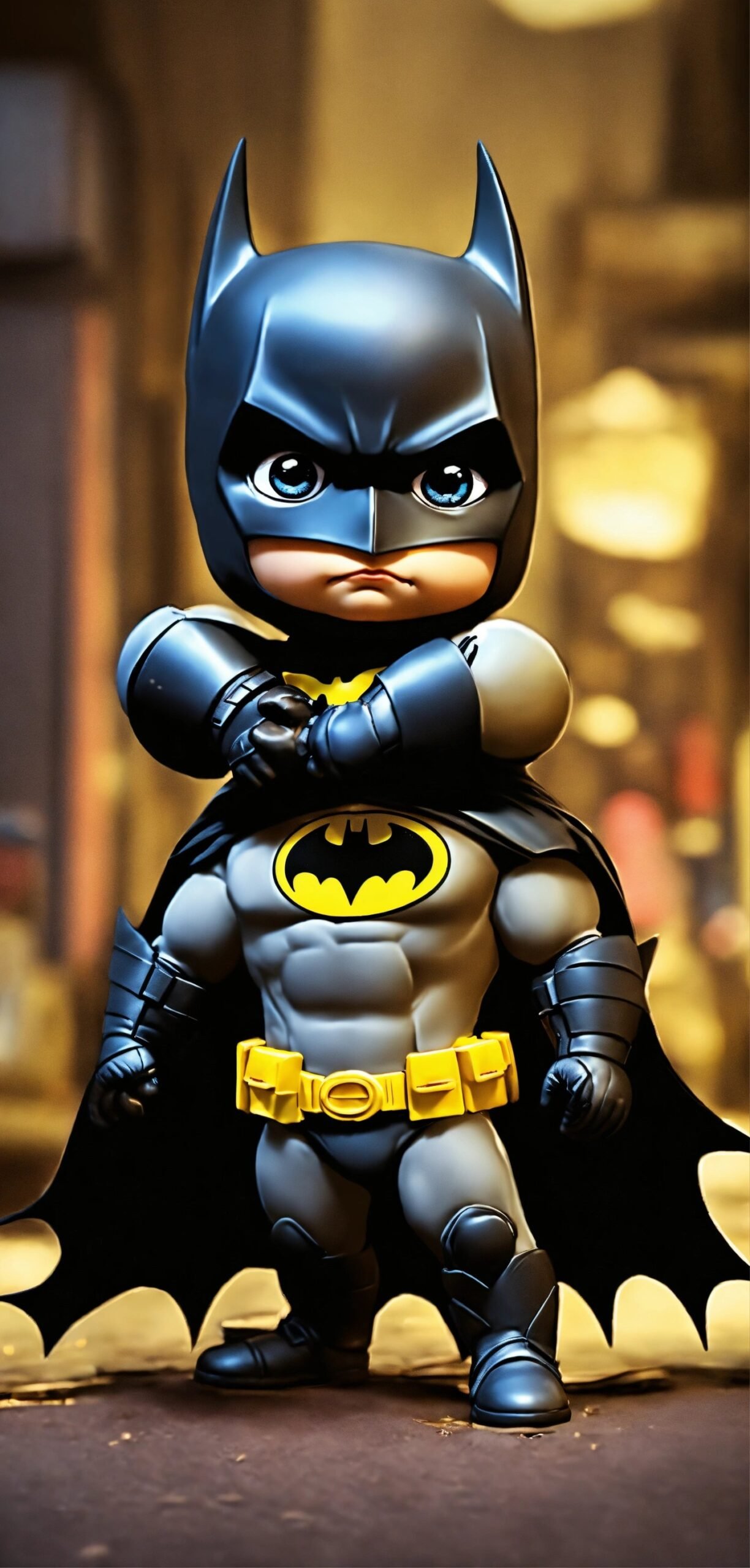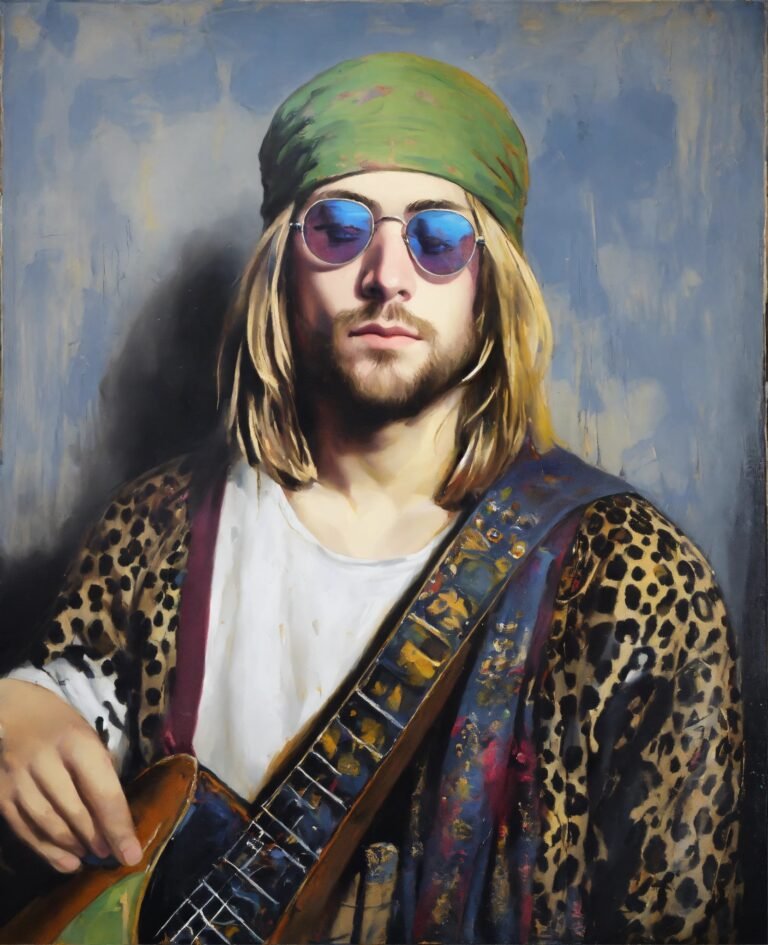Batman, the iconic superhero of Gotham City, has captivated audiences for decades. As one of DC Comics’ most beloved characters, the Dark Knight’s age has been a subject of curiosity for fans worldwide. How old is Batman? This question has sparked debates among comic enthusiasts and moviegoers alike, as the caped crusader’s age seems to shift across different storylines and adaptations.
The age of Bruce Wayne, the man behind the Batman mask, has changed over time in various Batman comics, movies, and TV shows. To get to the bottom of Batman’s age, we need to look at his origin story, analyze comic book timelines, and consider the factors that affect his portrayed age. From his early days driving the Batmobile to his later years in Batman Beyond, we’ll explore the different stages of Batman’s life and how they shape our understanding of this timeless hero.
Batman’s Origin and Early Years
Bruce Wayne’s Childhood
Bruce Wayne was born into the wealthy and prestigious Wayne family of Gotham City. His father, Dr. Thomas Wayne, was a respected physician, and his mother, Martha, came from the influential Kane family. At the age of three, Bruce’s life took a dramatic turn when his mother was involved in a car accident orchestrated by the mysterious Court of Owls. This incident occurred while Martha was pregnant with Bruce’s would-be younger brother, Thomas Wayne, Jr.
As Bruce grew older, he became restless with his family’s reputation and began sneaking out of school to explore Gotham City incognito. His childhood was marked by tragedy when, at a young age, he witnessed the murder of his parents by a mugger. This traumatic event would shape the course of Bruce’s life and set him on the path to becoming Batman.
Following his parents’ deaths, Bruce struggled with grief and even contemplated suicide. However, he ultimately decided that taking his own life was not what his parents would have wanted. Instead, he made a solemn vow to spend the rest of his life fighting crime in Gotham City.
Training to Become Batman
To fulfill his vow, Bruce Wayne embarked on an intense journey of physical and mental preparation. He began his training at the age of 11, focusing on physical conditioning and weight lifting by age 12. By the time he turned 18, Bruce had achieved full body control through specialized diet and biopathic feedback treatments.
Bruce’s training regimen was comprehensive and multifaceted:
- Physical combat: He studied various martial arts, including karate, judo, jiu-jitsu, and boxing.
- Mental discipline: Bruce honed his intellect by studying criminology, detective work, and investigative techniques.
- Stealth and infiltration: He learned to move undetected and gather information covertly.
- Technology and gadgets: Bruce developed proficiency in using and creating advanced equipment to aid his crime-fighting efforts.
During his global sojourn, Bruce attended prestigious universities such as Cambridge and the Sorbonne but often dropped out after one semester. He learned from various mentors around the world, including:
- Henri Ducard, who taught him manhunting techniques
- Kirigi, a ninja master who instructed him in stealth and shadow warrior ways
- African Bushmen, who shared hunting techniques
- Nepalese monks, who revealed healing arts
By the end of his training, Bruce had mastered 127 major styles of combat and acquired a vast array of skills necessary for his future role as Batman.
First Appearance as Batman
Batman made his debut in Detective Comics #27, published in May 1939. The story, titled “The Case of the Chemical Syndicate,” introduced Bruce Wayne as an uninteresting socialite who transformed into a merciless crimefighter when donning his iconic costume. This early version of Batman was a noir-tinged, street-level vigilante who was not afraid to use extreme methods to combat crime.
Six months after Batman‘s debut, his tragic origin story was revealed in Detective Comics #33 (November 1939). This two-page story established the brooding persona of Batman and explained the driving force behind his crusade against crime. It depicted young Bruce Wayne witnessing his parents’ murder and vowing at their grave to spend the rest of his life warring on all criminals.
The introduction of Robin, Batman‘s junior counterpart, in Detective Comics #38 (April 1940) marked a softening of Batman’s initially harsh portrayal. By 1942, the writers and artists behind the Batman comics had established most of the basic elements of the Batman mythos, setting the stage for the character’s enduring popularity and influence in popular culture.
Calculating Batman’s Age in the Comics
Different Comic Timelines
Batman’s age has been a subject of debate among comic book fans for decades. The character’s longevity and the various comic timelines make it challenging to pinpoint his exact age. In Frank Miller’s “The Dark Knight Returns,” Batman is portrayed as 55 years old, having retired from crime-fighting a decade earlier. This depiction presents an older Bruce Wayne returning to his role as the Dark Knight.
However, other comic storylines and adaptations have portrayed Batman at different stages of his life. In the “Year One” storyline, also by Frank Miller, Bruce Wayne becomes Batman at the age of 26. This establishes a starting point for many Batman timelines, with his crime-fighting career beginning in his mid-twenties.
Clues from Key Story Events
Several key events in Batman’s comic book history provide clues to his age:
- Bruce Wayne’s parents died when he was eight years old.
- He spent 12 years studying abroad before returning to Gotham.
- Dick Grayson became Robin when Bruce was 28 years old.
- Jason Todd joined as the second Robin when Bruce was 34.
- Tim Drake became the third Robin when Bruce was in his late 30s.
These events help create a rough timeline of Batman’s life, allowing readers to estimate his age in various storylines. For example, by the time Damian Wayne becomes Robin, Bruce is approximately 40 years old.
Writer and Editor Statements
Comic book writers and editors have occasionally provided their own estimates of Batman’s age. According to some DC Comics timelines, Bruce Wayne was around 34 to 35 years old during the “House of Hush” storyline. Towards the end of the Modern Age of comics, DC editors used Tim Drake’s age as a reference point, suggesting that Bruce was about 40 years old by 2011.
It’s important to note that Batman’s age is often kept intentionally vague to maintain the character’s timelessness. This allows different writers to portray Batman at various stages of his career without being constrained by a specific age. As a result, Batman’s age can vary depending on the particular comic storyline, writer’s interpretation, and the needs of the narrative.
Factors Affecting Batman’s Portrayed Age
Batman’s age has been a subject of much debate and fluctuation throughout his comic book history. Several factors contribute to the variations in his portrayed age, making it challenging to pinpoint an exact number. These factors include reboots and retcons, the use of a sliding timescale, and the existence of alternate universe versions.
Reboots and Retcons
Reboots and retcons have had a significant impact on Batman’s age and timeline. DC Comics has undergone several major reboots, each affecting the continuity and age of its characters. These reboots have resulted in time compression, where large chunks of story time are condensed to fit into shorter, more updated timelines.
For example, storylines like “No Man’s Land” or “Knightfall,” which originally spanned nearly a year in-story, are compressed into shorter periods in new continuities. This compression allows for a more condensed history of Batman while still incorporating key events from his past.
The 2011 Flashpoint reboot presented a unique challenge for Batman’s timeline. Editors wanted to maintain Batman’s rich history while fitting it into a six-year timeline. This resulted in a significant compression of events, with multiple Robins’ tenures being reduced from years to mere months.
Sliding Timescale
The concept of a sliding timescale has been employed in both the Silver Age and Modern Age of comics. This approach allows for the continuous updating of character origins and key events without significantly aging the characters.
DC Comics has used this technique several times, including:
- Retcons in the late 1970s and early 1980s
- The Zero Hour event in 1994
- Annual updates from 1994 to around 2002
The sliding timescale has caused inconsistencies in Batman’s age across different storylines. For instance, in Greg Rucka’s Detective Comics tales and the “Death and the Maidens” mini-series, it was stated that Bruce Wayne’s parents died roughly 25 years ago. However, this timeline became impossible to maintain as the comics progressed.
Alternate Universe Versions
Alternate universe versions of Batman have allowed writers to explore different stages of the character’s life without affecting the main continuity. These variations have contributed to the diverse portrayals of Batman’s age across different storylines and adaptations.
One notable example is the Batman Beyond universe, which presents an elderly Bruce Wayne mentoring a new, younger Batman. In this future setting, Bruce is depicted as a recluse kept alive through advanced medical technology and chemistry.
Other alternate versions have shown Batman at various stages of his life, from his early years to potential future scenarios. These different interpretations have added to the complexity of determining Batman’s “true” age in the main continuity.
The factors affecting Batman’s portrayed age demonstrate the challenges of maintaining a consistent timeline in long-running comic book series. Reboots, retcons, sliding timescales, and alternate universe versions all contribute to the fluid nature of Batman’s age, allowing the character to remain relevant and adaptable across decades of storytelling.
Conclusion
Batman’s age remains a fascinating topic for fans and comic enthusiasts. The Dark Knight’s timeline has shifted over the years due to reboots, retcons, and the use of a sliding timescale, making it tricky to pin down his exact age. Different storylines and adaptations have shown Batman at various stages of his life, from his early days as a young vigilante to his later years as a seasoned crime-fighter.
In the end, Batman’s age is kept intentionally vague to keep the character timeless and adaptable. This flexibility allows writers to explore different aspects of Batman’s journey without being tied down to a specific age. Whether he’s a 26-year-old rookie or a 55-year-old veteran, Batman’s enduring appeal lies in his unwavering commitment to justice and his ability to inspire readers across generations.
FAQs
1. What is Batman’s age during the events of The Dark Knight?
In “The Dark Knight,” Batman, also known as Bruce Wayne, is around 30 years old. This is confirmed during a scene where he celebrates his 30th birthday, which is disrupted by Ra’s al Ghul. The film itself is set in the year 2008.
2. How much time elapses between Batman Begins and The Dark Knight?
“The Dark Knight” takes place roughly a year after the events of “Batman Begins.” This timeframe is hinted at by the Joker during a meeting with the mob, where he mentions that a year prior, the police and lawyers were too intimidated to confront the mob.
3. Why does Batman appear older in The Dark Knight Rises?
In “The Dark Knight Rises,” Batman appears older due to the eight-year gap between this film and “The Dark Knight.” Director Christopher Nolan explains that this gap leads to an older and physically diminished Bruce Wayne, reflecting his prolonged battle against Gotham’s criminal underworld.
4. What is Batman’s canonical age?
Canonically, Batman is 26 years old when he first becomes the vigilante. His birthday is in February, and he starts his role as Batman in April of the same year. Over the course of his career, spanning 23 years until the end of the Modern Age in 2011, Bruce Wayne ages to 48 years old.



























+ There are no comments
Add yours